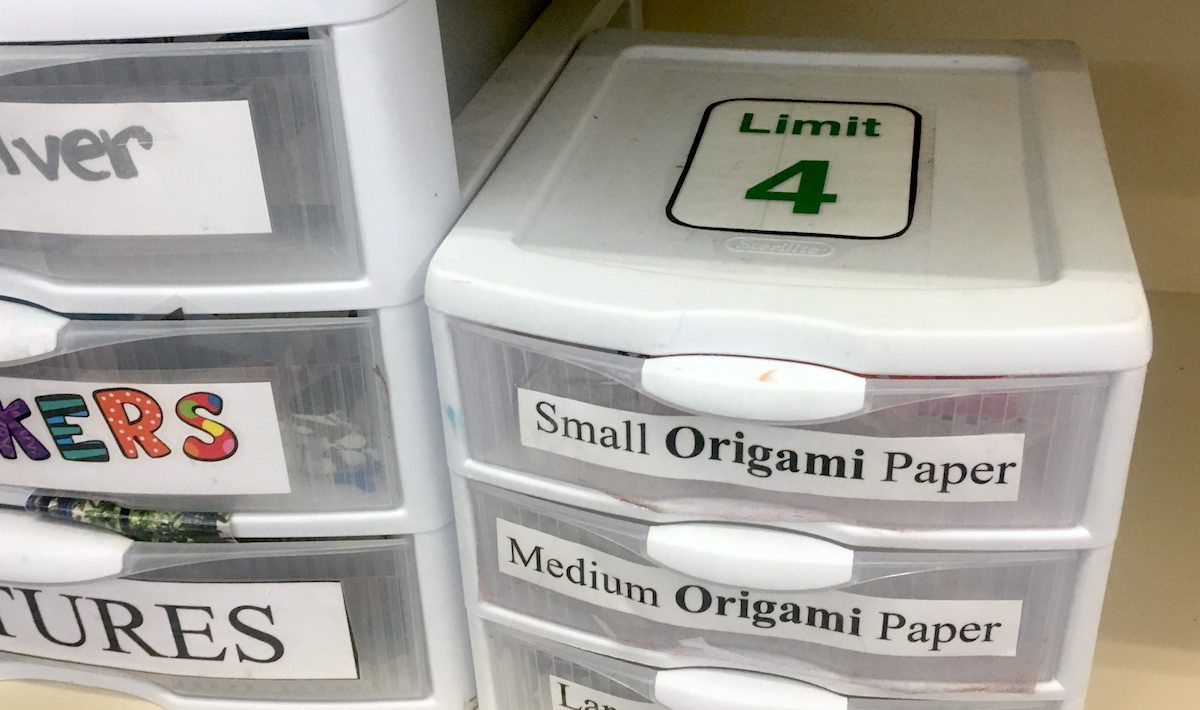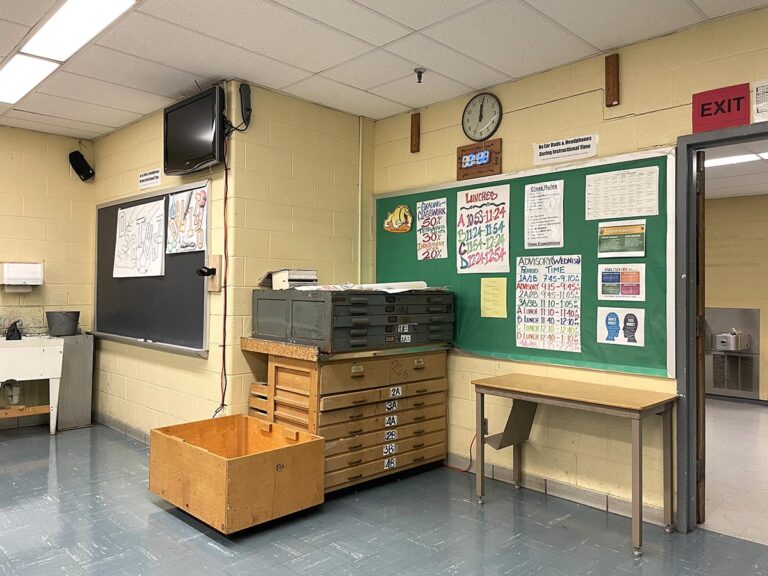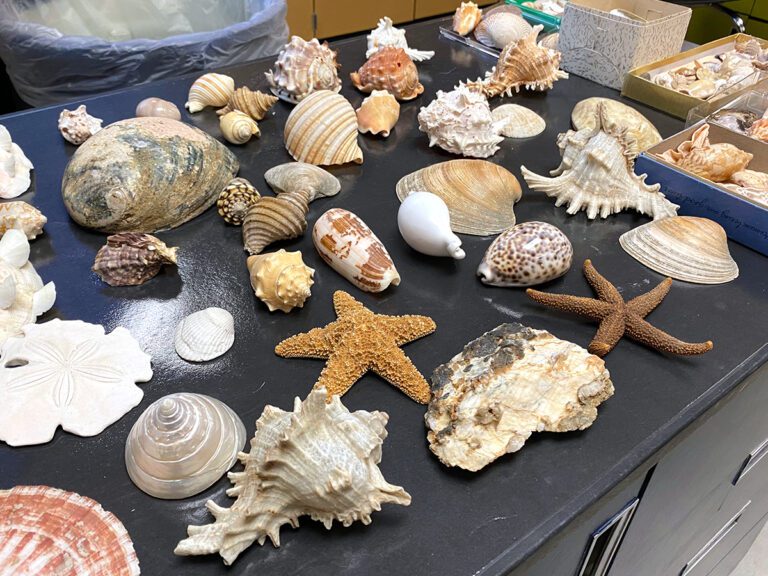With limited budgets, waste is something most art teachers worry about. This is true in all classrooms, but it can be especially concerning in choice-based rooms where students have independent access to materials. It’s easy to think open centers would spell disaster!
Fortunately, there are simple ways for students to access materials in any style classroom without giving up the whole paper supply on day one.
Here are 5 simple ways to prevent waste and mess while still providing independent access to materials.
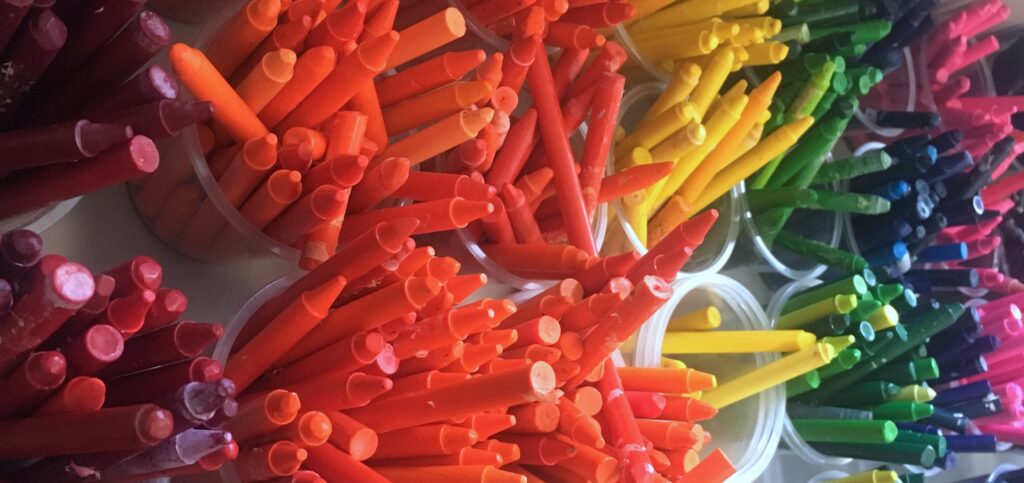
1. Roll out materials little-by-little.
Overwhelming students with access to numerous materials on day one is a bad idea. As you teach each type of media, communicate to students where the materials live in the classroom and how to use and clean them. Some materials are harder to take care of than others (like those related painting or printmaking) so start with drawing and work your way up from there.
Remind students the privilege of having independent access to materials comes at a cost! If any areas of the classroom are in disarray, those materials will no longer be available for use and the next class period will be spent relearning how to take care of them. Natural consequences like limited independence and work time can often be enough to keep areas orderly.
2. Create visual labels.
Students should be able to see exactly how an area should look when it’s clean and organized. Make sure to post photos of organized materials, printed in color, in a visible spot. Having a photo of pencils on your pencil container isn’t enough, though. Take a photo of your pencil container at its cleanest state for your display, as well as a photo of where the pencils go in relation to other items. Students will understand better what “clean” looks like in your particular space instead of having to guess your expectations. This also creates a perfect non-verbal cue you can point to when students need a reminder.
3. Start with less and refill.
Many teachers think allowing students to access their own materials means giving away the keys to the closet. That is not the case. One way to make sure students don’t hoard or overuse materials is to only put out a small amount at a time. By rationing things like pipe cleaners and high-quality paper, students will be able to see there is only enough for the class if they follow the limits.
If you need help keeping up with refills, choose a few responsible students who can be your refill team. Having refills for items labeled and organized in your storage space means you can show responsible students how to grab a handful of sharpened pencils or Popsicle sticks when the supply gets low. Train your refill team so they know exactly what to do and take the responsibility seriously.
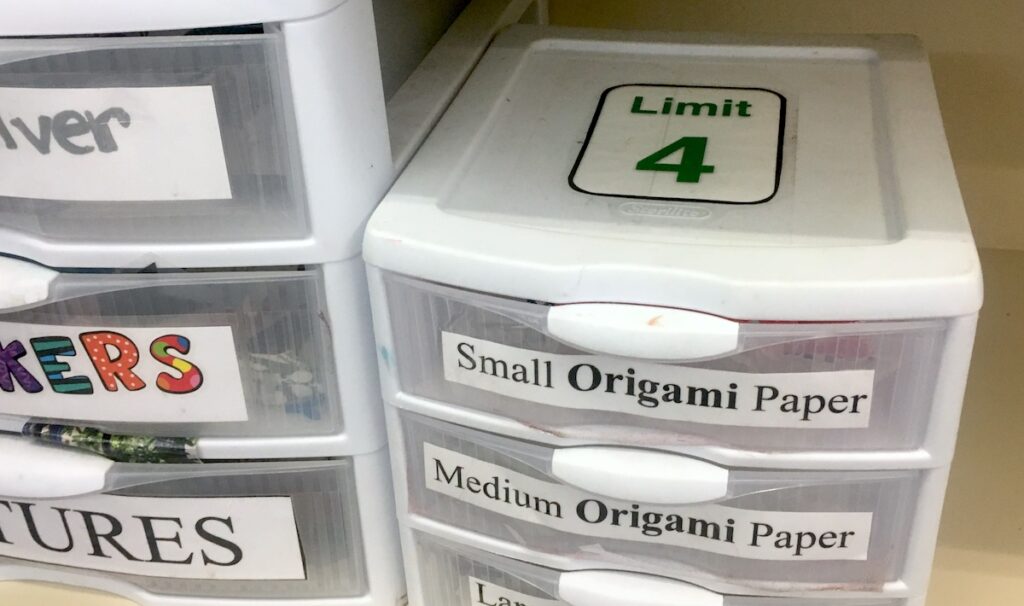
4. Post and teach limits.
If you take away one thing from this article it should be limits, limits, limits. Being bombarded by too many choices and no limits can make students think there is an unlimited amount of supplies. Create a uniform limit label you can use throughout the classroom to let students know how many of each item they can use.
Teach your students limits as part of your demonstration and make sure to communicate limits can be flexible with teacher permission. For instance, four pieces of origami paper each week may extend for a project requiring six pieces. This way, students learn materials are not “free” but they don’t feel hesitant to explore larger-scale projects.
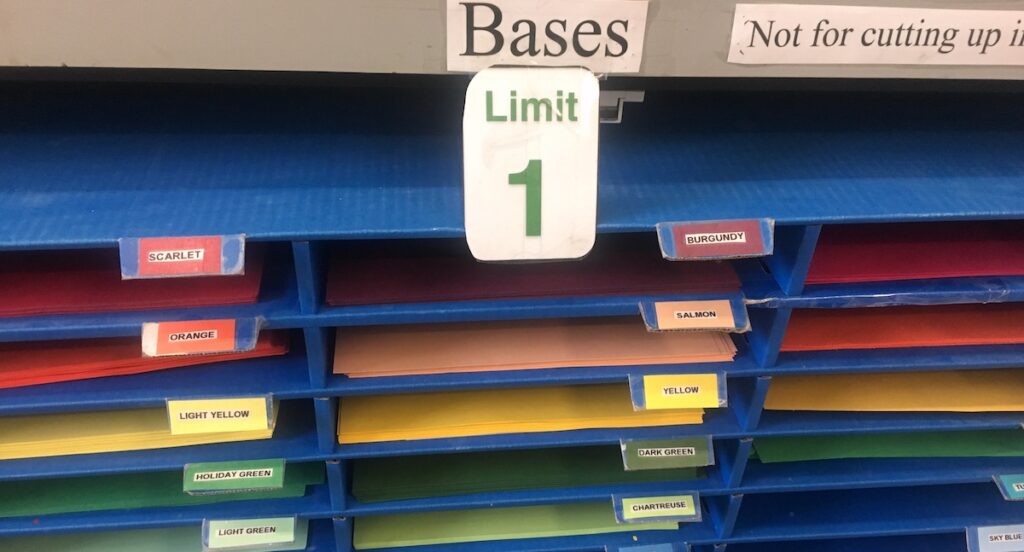
5. Create kid-friendly organization methods.
Adults and children differ in their ability to follow complex organizational systems. Especially with younger students, the vision you have for a space may not fit the needs of your age group. Set up your centers with your students in mind and modify them as problems arise.
Here are two methods to try:
- Color-coding
Color-coding is a simple visual cue that items are out of place. This type of organization is useful for nonreaders and is enticing for students and adults. Use it throughout the room and invite learners to explore the rainbow display! - Big Box Organization
Separating certain items can be a waste of your valuable time! For example, when setting up a found-object sculpture area, it may be useful to keep all your bigger items in large boxes so students can dig through and explore their options. This method is much easier to clean up, and students have a chance to discover items they may not have been looking for!
If you’re nervous about moving to centers in your room, remember you’ll spend less time passing out materials and have more time for instruction, assessment, and one-on-one conferences. Relinquishing control to students to set up their own space teaches them self-reliance and organizational skills. It also allows students to make purposeful choices about the type of media that works best for a project.
Giving students more freedom in your classroom doesn’t always mean more waste. Set expectations early on and you will not only save time but the headache of hearing your name over and over again. This type of freedom also gives students more independence and therefore more ownership over their artwork.
How do you pass out materials to your students?
Do you find waste is a big problem in your classroom?
Magazine articles and podcasts are opinions of professional education contributors and do not necessarily represent the position of the Art of Education University (AOEU) or its academic offerings. Contributors use terms in the way they are most often talked about in the scope of their educational experiences.
